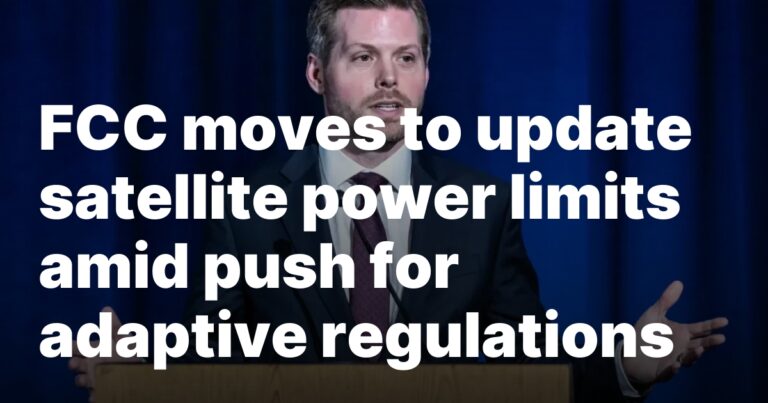TAMPA, Fla. — The Federal Communications Commission is preparing to update decades-old satellite power limits amid broader efforts to modernize and streamline regulations, the new head of the U.S. agency’s space division said April 7.
Speaking during the Space Symposium in Colorado Springs, FCC Space Bureau chief Jay Schwarz pointed to a recently issued public notice to review changing rules for Ka and Ku band satellite frequencies.
“We looked at the situation and we recognized that many of the rules that were in place, EPFD specifically, were designed” 30 years ago, he said, referring to Equivalent Power Flux Density caps governing how strong non-geostationary (NGSO) signals should be to avoid disrupting satellites in geosynchronous orbit (GSO).
The FCC has tentatively scheduled a vote to review how NGSO and GSO operators share spectrum at its next open meeting April 28.
“I think it’s going to be a highly technical proceeding,” Schwarz continued. “There’s going to be … the need for good technical analysis, but the end goal is to make sure that we have great broadband for Americans across the country, but particularly in rural areas.”
On the agenda
A proposal to review EPFD limits was one of the most divisive issues debated during the 2023 World Radiocommunication Conference (WRC), a quadrennial event for updating global spectrum rules.
International regulators ultimately reached a compromise, allowing technical studies on EPFD to be presented in 2027, the next time the United Nations’ International Telecommunication Union holds a WRC, without regulatory consequences.
GSO operators, such as Viasat, contend this compromise means regulatory proposals for updating EPFD limits cannot be discussed until the follow-on WRC in 2031.
However, SpaceX and other NGSO players argue that the agreement left room for other avenues to study and potentially revise the limits.
NGSO operators want the caps adjusted for more flexibility to innovate, while GSO players warn this could undermine investments needed to evolve established systems in their part of the market.
Specifically, the FCC plans to vote on whether to grant a petition from SpaceX to initiate a Notice of Proposed Rulemaking (NPRM) to review GSO and NGSO spectrum sharing in the 10.7-12.7, 17.3-18.6, and 19.7-20.2 gigahertz bands.
The NPRM would also:
Solicit feedback on how advancements in satellite technology impact EPFD limits, the effectiveness of current protections for GSO networks and whether alternative sharing frameworks could improve efficiency.
Gather input on suitable short- and long-term protection criteria for GSO networks and the reference links needed for evaluating compliance.
Examine methods to improve spectrum sharing through better communication between GSO and NGSO operators, address aggregate interference and maintain protection for co-frequency terrestrial stations.
Shifting attitudes
Schwarz, who was named chief of the Space Bureau Feb. 4 to replace Julie Kearney, said the two-year-old division is continuing to search for ways to streamline licensing procedures and spectrum access.
“Our licensing system is a classic gatekeeper system,” he told the conference, “and it was a system that was designed for an industry that maybe used to exist, and could tolerate it, but it’s not tuned to the system or the industry that we have today.”
Instead, Schwarz said the FCC aims to “flip from a bias for gatekeeping to a bias for permission,” citing examples from other U.S. industries, such as trucking, that saw growth after deregulation in the 1980s.
“We have a lot of evidence that opening up regulatory gates lead to big gains in industries where there’s a potentially competitive structure,” he said.
Schwarz did not offer specific details but said these efforts include removing soft barriers to entry, such as lengthy and resource-intensive application processes.
“At the FCC, we want to imagine how innovation can happen not just by making our licensing system 15% better,” he said.
“We want to make it 500% better, but you don’t get 500% better by just working harder. You get there by working smarter … you get there by reconsidering the paradigm.”

